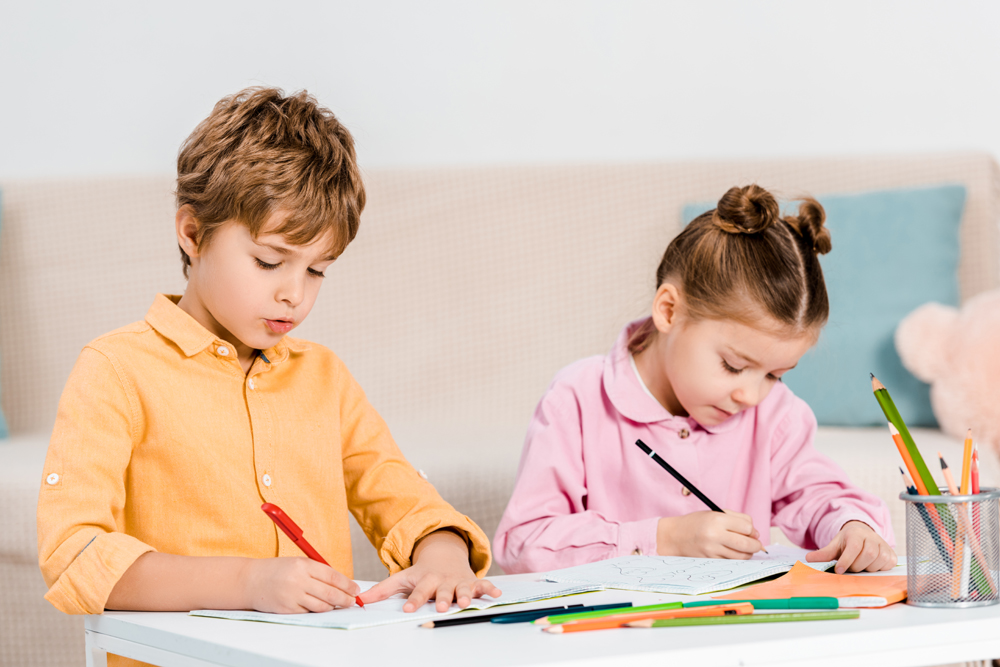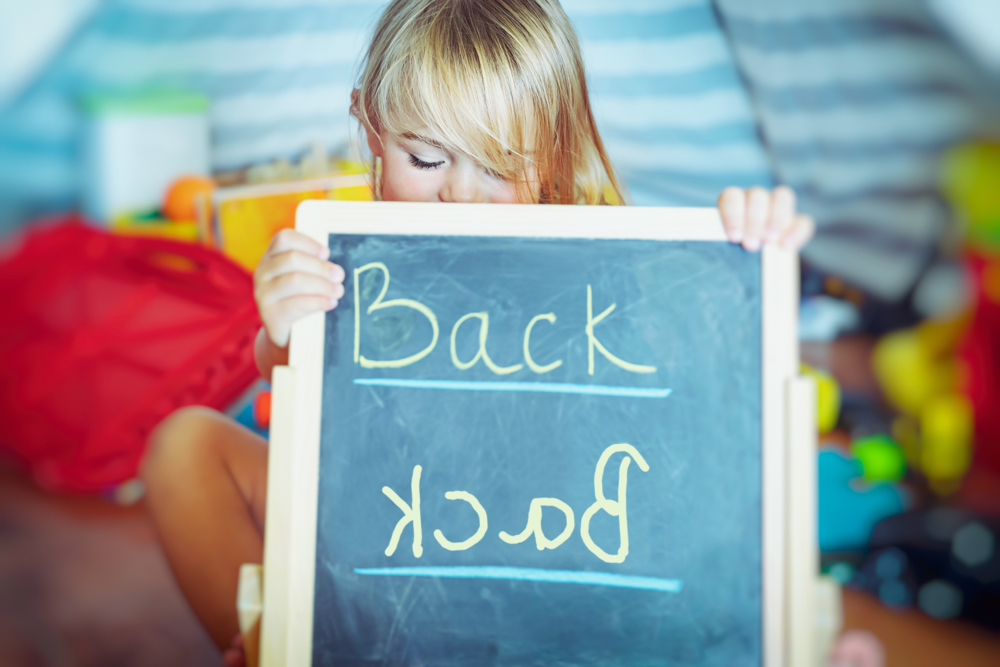Table of Contents (click to expand)
Children sometimes write letters backwards because their brain is still developing, which means that it may confuse the correct orientation of certain letters.
Parents and teachers all over the world put a lot of effort into educating children. They prod and poke 4-year-olds to read bat, rat, and cat, to say the three golden words, ‘please, thank you, sorry’, and to write all their letter within the dotted lines. However, one quirk most children share that frustrates adults is writing 3, R, S and B backwards!
These poor children are probably confused as to why their teacher keeps telling them to flip the letters, but with repeated practice and corrections, children gradually begin writing letters that face the correct way—to everyone’s great relief!
Yet, is it strange that children write certain letters as a mirror image?

What Is Mirror Writing?
Mirror writing is writing that would look correct when reflected in a mirror. The writing runs in the opposite direction of normal English script—right to left, with individual letters being reversed.
Mirror writing isn’t completely anomalous and even adults may do it in some capacity. If you’re right-handed, try writing with your left hand. You may find that your left hand tends to mirror write, meaning that you have to actively suppress the urge to flip your writing into the “right” orientation. Research has shown this phenomenon on a larger scale. Most left-handed people are more likely to be able to mirror write—and do so just as competently as they can write normally—than right-handed individuals.
Leonardo da Vinci, who was left-handed, mirror wrote almost exclusively. Scientists and historians who are still puzzling over this have suggested that da Vinci suffered an injury to his right hand and therefore wrote with his left, while others say that he had a stroke, which made him a mirror writer (Source).
Children only mirror write between the ages of 4 and 7, when they are first learning to write. They are inconsistent mirror writers, only making errors with certain asymmetric letters, such as J, d, and 3.
Also Read: Why Does A Mirror Reverse Left And Right, But Not Top And Bottom?
Why Children Mirror Write?
Macdonald Critchley, a researcher who wrote one of the first papers on mirror writing in 1926, suggested that children simply forget the orientation of certain letters.
In his paper, The significance of mirror writing, he writes, “In the case of children learning to write there persists for some little time an element of doubt as to the correct orientation in space not only of letters, but even of words, which after all is purely an arbitrary arrangement. This is particularly true in the case of children who attempt to write before they have completely mastered their letters. This indecision accounts for the occasional reversals of letters or words seen in the earliest efforts at penmanship in many normal children.”
Later research noted that children tend to mirror write letters and digits that face left (like 3) more often than those that face right (like D). One reason for this, as researchers have suggested, is that children convert all letters to right-facing letters when they can’t remember the right orientation. This makes sense, as most asymmetrical letters face right, meaning that they have an extension on the right hand side (E, D, B).

These studies and the hypotheses they put forth still don’t account for why children don’t completely mirror write. We also don’t know the exact neurological underpinnings of why children mirror write. To oversimplify the issue, we know that the brain doesn’t stop developing until the end of adolescence, and young brains are still more malleable. How do young brains process images differently than older, more mature brains? Mirror writing might give us some insight into that.
Most of this research is performed with small sample sizes (between 30 and 100 subjects). Furthermore, we don’t fully understand how the visual system works or to what extent certain cognitive functions of the brain influence spontaneous mirror writing in children. Much of the neurological information we have on mirror writing comes from neurological injuries, such as from a stroke.
Also Read: Can Animals Recognize Themselves In The Mirror?
A Final Word
Mirror writing is common in young children, and a normal part of their development. As children write more frequently, they learn to write correctly and fluently; whether they develop good handwriting is a different matter altogether.
Writing today, I think, isn’t as important as it once was. Many of us have transitioned to typing on our phones and computers rather than taking notes in our notebooks. This is a relief for those of us who live with the curse of bad handwriting.
Also Read: Writing Vs Typing: What Makes Us Happier?
How well do you understand the article above!

References (click to expand)
- Portex, M., Hélin, C., Ponce, C., & Foulin, J.-N. (2018, March 19). Dynamics of mirror writing compared to conventional writing in typical preliterate children. Reading and Writing. Springer Science and Business Media LLC.
- Fischer, J.-P. (2011, June). Mirror writing of digits and (capital) letters in the typically developing child. Cortex. Elsevier BV.
- Fischer, J.-P., & Koch, A.-M. (2016, April). Mirror writing in typically developing children: A first longitudinal study. Cognitive Development. Elsevier BV.
- Schott, G. D. (2007, January 1). Mirror writing: neurological reflections on an unusual phenomenon. Journal of Neurology, Neurosurgery & Psychiatry. BMJ.
